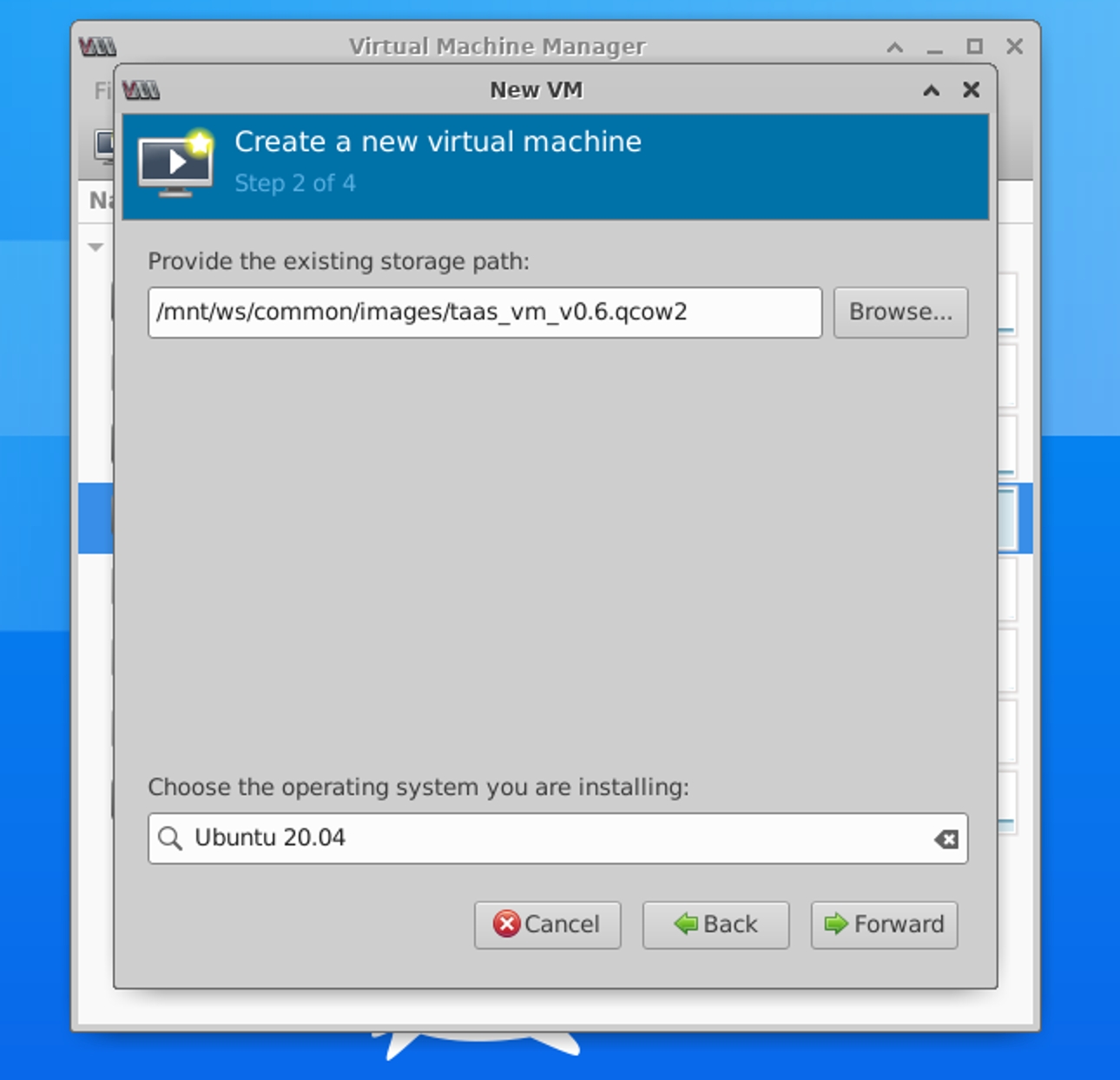Deploy the VM
The VM image is provided as a gzip file. It should be decompressed to get the qcow2 image to deploy as a VM.
The FTAS VM has Aviz ONES integrated into it and will take some time to initialise after the first boot.
sonic@sonic-39:~$ gunzip -c ftas_ones_vmi_1.1.2.qcow2.gz > ftas_ones_vmi_1.1.2.qcow2
sonic@sonic-39:~$ ls -l
total 8302936
-rw-rw-r-- 1 sonic sonic 4929683456 Feb 21 06:21 ftas_ones_vmi_1.1.2.qcow2
-rw-rw-r-- 1 sonic sonic 3572510886 Feb 21 06:20 ftas_ones_vmi_1.1.2.qcow2.gz
sonic@sonic-39:~$ You can connect to the console port of the VM to see the installation logs.
Create the VM using GUI App virt-manager
If your host server has Ubuntu Desktop and virt-manager installed you can use it to deploy the VM. Make sure you can start the Virtual Machine Manager and that it connects successfully to the local hypervisor.

Creating a VM with virt-manager is very straightforward, Use the following steps to deploy the FTAS VM
File -> New Virtual Machine -> Import existing disk image -> Forward

Browse to the FTAS disk image location and select Ubuntu as the OS name
Click "Forward" and select vCPU (min 2 cores) and Memory (4GB) for the VM

Click "Forward", give your VM a name and check "Customize configuration before install"
Select "NIC ...", in the "Network source" select the Linux bridge you created on the host machine

Apply the configuration and start the VM
Create the VM using XML configuration
Create an XML configuration file from the following template
The below lines can be changed to customize the VM installation:
Create a Linux bridge configuration file (bridged-network.xml) for libvirt from the following template
Define the Linux bridge for the VM
Start the VM
If you see a permission error run the virsh command with sudo may fix the issue
Check the VM status
Configure the IP address on the VM
If there is a DHCP server on the management network the VM will obtain its IP configuration from the DHCP server
If there is no DHCP server or you want to configure the IP address statically, Follow the below steps
Enter VM console
Check connections and devices
Release IP assigned by DHCP
Configure static IP for the connection
Set a default Gateway address
Set the IP configuration mode to manual
Reapply the configuration to the interface
Verify the IP address
Test FTAS VM reachability from outside the VM, if the VM is not reachable please check the access rule at the below location,
If the above value is 1 please change it to 0 and the reachability issue should be resolved
There are some scaling scripts that require multiple network service servers (NTP, SYSLOG, TACACS+, etc.). In order to simulate this, we can add a secondary IP address to the VM NIC.
To add a secondary IP address, use the command
Network services containers
The FTAS VM has docker containers running and the following docker images installed:
DHCP container image
ztp_dhcp(DHCP sevice)
Net Services container image
netservices:v1(NTP, SYSLOG, TACACS+ services). This container is run with the "--network=host" option. If you need to change the configurations of the services please find them in the following configuration files.
Dockers running by default:
